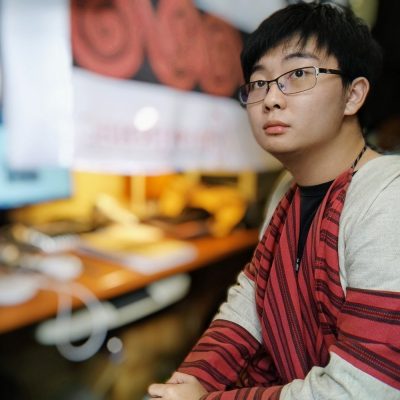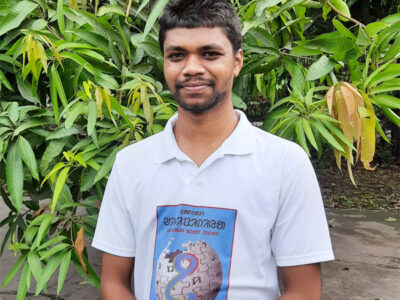Q&A: Meet Walis Taywang, Seediq language activist

Seediq language activist Walis Taywang. Photo provided by Walis Taywang.
Each week, the upcoming host will answer several questions about their background and give a brief overview of their language. This Q&A is with Walis Taywang (@KSeediq) who will provide a sneak preview of what he will be discussing during his week as host.
Rising Voices (RV): Please tell us about yourself.
Walis Taywang (WT): Sndamac namu bale! Walis Taywang ngayan mu. (Hello! My name is Walis Taywang.) I’m a 20-year-old university student from Taiwan, majoring in Linguistics. However, I’m not an indigenous person. After finding inspiration in the movie “Warriors of the Rainbow: Seediq Bale” (賽德克·巴萊), I started to learn Seediq culture and language and haven't stopped until now. This year, I created a fan page on Facebook and started introducing Seediq language to those who don’t know much about it. By sharing some newly-coined words or translating memes into Seediq, the fan page has been successful so far. Next, I will introduce Seediq through Taiwanese and Hakka, so that speakers of different languages can understand the essence of Seediq.
RV: What is the current status of the Seediq language on the internet and offline?
WT: Seediq is endangered as a result of the improper language policies promulgated by the colonists, Japan and the Republic of China. Although elderly people living in their territories can speak Seediq fluently, young people have gradually lost their language due to the influence of Mandarin, which was used as the only medium of instruction and was the only recognized national language from 1949 to 2018. In recent years, local awareness has risen, and mother tongue education has begun to be valued. What's more, in 2017 and 2019, the Indigenous Languages Development Act and the Development of National Languages Act were passed one after another, and our native languages have finally become Taiwan's national languages. As for exposure on the Internet, currently there is only my Facebook page and the Instagram account of another illustrator. We still have to keep working hard to promote it.
RV: What topics do you plan to focus on during the week that you’ll manage the @AsiaLangsOnline Twitter account?
WT: I’ll probably share a basic introduction to Seediq language, memes translated into Seediq, and information about how to prevent COVID-19. This content will contain some basic words and short sentences. At the same time, I will introduce some simple grammar or pronunciation, so that everyone can understand more easily.
RV: What are the main motivations for your digital activism for your language? What are your hopes and dreams for your language?
WT: Actually, it’s very simple. I just want to let such a beautiful language be seen by more people and try to extend its use beyond daily conversation to different fields such as legislature, government documents, even academia. I also hope nobody will be discriminated against when speaking Seediq in the future.
Support our work
Since Rising Voices launched in 2007, we’ve supported nearly 100 underrepresented communities through training, mentoring, microgrants and connections with peer networks. Our support has helped these groups develop bottom-up approaches to using technology and the internet to meet their needs and enhance their lives.
Please consider making a donation to help us continue this work.



